#Tool Model Gadget 3D Models
Explore tagged Tumblr posts
Text
https://mintcad.com/tools
3D Print Mechanical Tool Model NFT Downloads
Reimagine workshops with Mintcad's collection of forward-thinking hand tool, mechanical, electrical and lifting equipment model NFT downloads.
#Tool Model 3D Models#Tool Model 3D Models for Projects#Tool Model Gadget 3D Models#Best NFT Marketplace#Best 3D Print Ready Tool Model NFT Files
0 notes
Text

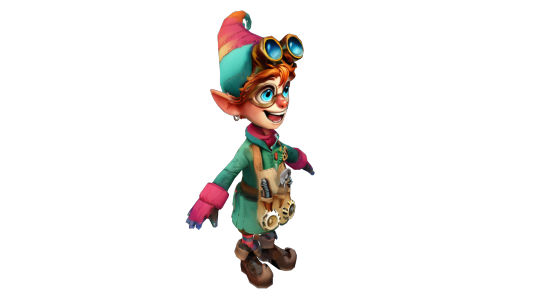



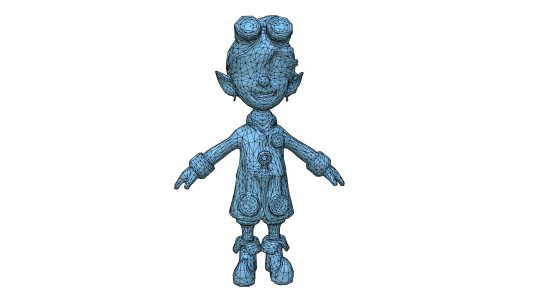
Kringle The Tinkerer 3D Model Lowpoly Elf
3D Model Specifications
8,969 Polygons
4,481 Vertices
Polygonal Quads/Tris Geometry
#Tinkerer#Elf#Inventor#Workshop#Magic#Enchanted#Toys#Gadgets#Christmas#Creativity#Innovation#Whimsy#Clockwork#Tools#Santa#Joy#Invention#design#3d model#blender 3d#3d art#3d artwork#3d animation
3 notes
·
View notes
Text
AGARTHA Aİ - DEVASA+ (4)
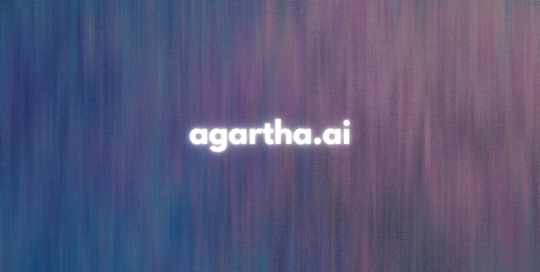
In an era where technology and creativity intertwine, AI design is revolutionizing the way we conceptualize and create across various industries. From the runway to retail, 3D fashion design is pushing boundaries, enabling designers to craft intricate garments with unparalleled precision. Likewise, 3D product design is transforming everything from gadgets to furniture, allowing for rapid prototyping and innovation. As we explore these exciting advancements, platforms like Agartha.ai are leading the charge in harnessing artificial intelligence to streamline the design process and inspire new ideas.
AI design
Artificial intelligence (AI) has revolutionized numerous industries, and the realm of design is no exception. By leveraging the power of machine learning and advanced algorithms, AI is transforming the way designers create, innovate, and deliver their products. AI-driven tools enable designers to harness vast amounts of data, allowing for more informed decision-making and streamlined workflows.
In the context of graphic design, AI can assist artists in generating ideas, creating unique visuals, and even automating repetitive tasks. For instance, programs powered by AI design can analyze trends and consumer preferences, producing designs that resonate with target audiences more effectively than traditional methods. This shift not only enhances creativity but also enables designers to focus on strategic thinking and ideation.
Moreover, AI is facilitating personalized design experiences. With the help of algorithms that analyze user behavior, products can be tailored to meet the specific needs and tastes of individuals. This level of customization fosters deeper connections between brands and consumers, ultimately driving customer satisfaction and loyalty in an increasingly competitive market.
3D fashion design
In recent years, 3D fashion design has revolutionized the way we create and visualize clothing. Using advanced software and tools, designers can create lifelike virtual garments that allow for innovative experimentation without the need for physical fabric. This trend has not only streamlined the design process but has also significantly reduced waste in the fashion industry.
Moreover, 3D fashion design enables designers to showcase their creations in a more interactive manner. By utilizing 3D modeling and rendering technologies, designers can present their collections in virtual environments, making it easier for clients and consumers to appreciate the nuances of each piece. This immersive experience also helps in gathering valuable feedback before producing the final product.
Furthermore, the integration of 3D fashion design with augmented reality (AR) and virtual reality (VR) technologies is bringing a fresh perspective to the industry. Consumers can virtually try on clothes from the comfort of their homes, thereby enhancing the shopping experience. As this field continues to evolve, it promises to bridge the gap between creativity and technology, paving the way for a sustainable and forward-thinking fashion future.
3D product design
3D product design has revolutionized the way we conceptualize and create products. With advanced software tools and technologies, designers can now create highly detailed and realistic prototypes that are not only visually appealing but also functional. This process allows for a quicker iteration of ideas, enabling designers to experiment with various styles and functionalities before arriving at the final design.
One of the significant advantages of 3D product design is the ability to visualize products in a virtual environment. Designers can see how their creations would look in real life, which is essential for understanding aesthetics and usability. Additionally, this technology enables manufacturers to identify potential issues in the design phase, reducing costs associated with prototype development and rework.
Moreover, the rise of 3D printing has further enhanced the significance of 3D product design. Designers can swiftly turn their digital models into tangible products, allowing for rapid prototyping and small-batch manufacturing. This agility not only speeds up the time-to-market for new products but also paves the way for more innovative designs that were previously impossible to execute.
Agartha.ai
Agartha.ai is a revolutionary platform that merges artificial intelligence with innovative design, creating a new avenue for designers and creators alike. With the rapid advancements in technology, Agartha.ai leverages AI to streamline various design processes, enabling users to produce unique and captivating designs with ease.
The platform provides tools that empower both emerging and established designers to explore the possibilities of AI design. By utilizing intelligent algorithms, Agartha.ai can assist in generating design options, ensuring that creativity is not hindered but enhanced. This results in a more efficient workflow and allows designers to focus on the conceptual aspects of their projects.
One of the standout features of Agartha.ai is its ability to adapt to different design disciplines, such as 3D fashion design and 3D product design. By supporting a broad spectrum of design fields, it positions itself as a versatile tool that meets the evolving needs of today's creative professionals. Whether it's crafting intricate fashion pieces or developing innovative product designs, Agartha.ai is at the forefront of the design revolution.
329 notes
·
View notes
Text
Touching is Good: A Retrospective
My trusty Nintendo 3DS, which has held out since I was gifted it for my 15th birthday, has turned one decade old with my 25th birthday this past November. Given new life with custom firmware and nds-bootstrap via TWiLightMenu, the 3DS is stellar for visiting any past handheld title or console title up to (and somewhat including) the N64. (Quick plug for the CFW/hacking community for the less popular PS Vita, too, which has accomplished some pretty crazy-cool stuff this last year.) I use my 3DS more often than I use my Nintendo Switch most weeks.
The Nintendo DS (minus the three) launched in late 2004. The second display and stylus support were novel tools for developers to experiment with, and the NDS is best remembered for its robust catalogue of RPGs and visual novels. Where it lacked in power, narrative-focused games flourished under its technical limitations.
That being said, while browsing the ROM archives on Vimm's Lair to pick up some titles, I was reminded of what an interesting era the mid-to-late 2000s were for games. While Sony and Microsoft were fighting over the "core gamer" demographic, who had outgrown Nintendo mascots, Nintendo led a series of wildly successful marketing campaigns for its hardware after the light failure of the Gamecube, where the Nintendo DS and then the Wii were targeted at...everyone else.

[Image source. Image description in alt text.]
If you look at ads for the DS and the Wii, you'll see that adults are featured much more prominently than children, especially women and seniors. (This did not go unnoticed, as I found this ancient relic of misogyny while looking for images for this post.) A Nintendo handheld was already an easy sell to parents with small children (though I think it's also notable that ads which do focus on children often prominently feature girls. Munchlax is pretty hot...), but Nintendo's angle for the DS and Wii was that their hardware wasn't just for children. The Wii was a way to get up off the couch and to play board games with grandma. The DS was a great gadget for a working woman to keep in her pocketbook.
This worked. The Wii and DS were two of the best-selling consoles of all time. In particular, the DS's marketing campaign only worked because it came out in the perfect window of time. PDA-phone hybrids had been around since the 90s, and the Blackberry had been kicking around for a few years, but the iPhone wouldn't be introduced until 2007, and the 4G LTE standard wouldn't be released until 2009. While the Blackberry was popular with businesspeople and the PDA was out of style, smartphones were luxury toys for several years; they wouldn't become near-ubiquious until the mid-2010s. I didn't get my own smartphone until probably around the same time I got my 3DS, a full handheld generation later.
Browsing the software library for the Nintendo DS and DSi with that in mind is really interesting. Many titles released for the platform serve the same purposes that would be fulfilled by simple smartphone apps less than a decade later: planners and diaries, fitness trackers, calculators, language learning and SAT prep software, even a guide to the then-most-recent version of the driver's test in the UK. These proliferated with the release of the DSi's virtual store, but they existed even with the base model. You could go to a brick-and-mortar store and buy them on physical cartridges. (You might be wondering, "Why would you bother carrying those around over just buying a Blackberry?" You can't underestimate how expensive the service bills for a smartphone were before companies realized they were the most powerful spyware tool in history.)
There was never a time where every single businesswoman in New York carried a DS Lite, but adults did buy and use them, and a not insignificant portion of the DS's software library is aimed at a casual adult audience. Another niche covered mostly by smartphone games these days—games designed to be picked up and played in short sessions on-the-go, in places like waiting rooms and subway commutes.
Nintendo made crazy bank in the seventh console generation. Publications of the time talked about a console war between Sony, Microsoft, and Nintendo, but the real battle was between the PS3 and the Xbox 360 over the gamer demographic. Nintendo was producing hardware for a niche who would quietly disappear once smartphone sales began ballooning by hundreds of millions per year over the course of the early 2010s.
After the failure of the Wii U, Nintendo's marketing strategy pivoted again, though I doubt they'll ever completely abandon their family-friendly image. Currently beat out only by the PS2 and the DS, the Nintendo Switch may very well climb to a status as the best-selling console of all time before the end of its lifespan, but the "gamer" demographic is much bigger than it was two decades ago at the dawn of the DS. As more and more devices become consolidated into the Swiss army knife the smartphone has become, consoles can only carve out a role as dedicated gaming machines.
I'm not sure we'll ever see anything like the Nintendo DS or the Wii again. I think they're worth looking back on for their uniqueness in that way as much as they are for the more celebrated parts of their libraries.
#mine#this is the first in a series of posts i have in mind on this general subject. my next one will be more entertaining i think.
30 notes
·
View notes
Text
As for myself, I never backpacked through Asia, and of course I've never done a medical residency, either.
I was a Second Life content creator around 2008-2012, which is itself pretty rare.
In Second Life, especially in those years, there wasn't a clean division between "playing the game" and "making the world," and there wasn't a clean division between "content creators" (including businesses) and "players." And the whole thing was funded mostly by privately leased plots of virtual land as server space.
Back in 2007, under liberal technological optimism, there was still this sense that everyone would own and learn to properly operate their own PC, which is to say a 'real' computer like a desktop or laptop, rather than an 'appliance' computer like a smartphone or tablet. Though the platform was privately held, Second Life embodied this thinking.
And so it possessed this immense feeling of power and control. You could click on a rock and drag it around. If you had good device operator skills, you could search out and purchase a supply of copiable rocks and assemble a little volcano lair and exotic beach house on a sandy beach as your home.
At first, almost all items were assembled within the game, and only textures made externally. Gradually this shifted to the use of external 3D modelling tools such as Blender, but for a time, this meant that much of the act of product creation was in the world, as in people would be logged in making the product in front of you and you could chat with them while they did so.
And of course, this world attracted people that for some reason were willing to lean to this kind of detached embodiment. Some were queer, or trans, or neurodivergent. Some were of ill health, or crippled. Others were in some sense very 'in their own heads,' or just well-adapted to simulated or virtual-reality environments. (Does that sound like Tumblr? It's probably not a coincidence.)
It was a world with a very different axis. Your appearance was a function of your aesthetic taste, your device operator skill to search out and assemble and compose an outfit, and only a modest amount of money. Someone with a very high-grade appearance would also be someone that's decently good with computers. For those with programming aptitude, their gadgets or products around them (or for sale at their store), would illustrate it.
And for creators, there was overlap between the ability to 3D model a car, and the ability to 3D model clothing. A creator could be a maker of tanks and also have their own fashion line - or even unique personal outfits. (Even hobbyists with more modest abilities would customize and kitbash - and creators would sometimes set things up specifically so that they could do so.)
There was a sense of whimsy. Cultural norms, too, though of course all massively-multiplayer systems will develop their own etiquette. (Gender could be fluid - the same player might have a stock of both male and female bodies and outfits depending on the context in which they were to be used and the message they wanted to send.)
The problem with Second Life is that you cannot live there.
Yes, it's a low-dimensionality construct like all video games. It lacks scent, and temperature, and touch. Its avatars have far fewer bones than a human body does, and of course, no organs. Its low dimensionality is why it can be changed and molded like clay, into fantastical forms that could never exist in real life.
But more importantly, children live in real life. And if you're injured or sick and can't get up, someone needs to come retrieve you in real life.
The platform turned out to be relatively useless for major corporations and universities. It didn't transform the economy and add trillions to the GDP, and virtual land didn't become the wave of the future - although digital currency did, for a while.
Instead, this failed vision of the future created a flourishing of creativity and human connection, and as time passes, it's becoming clear that the reason is because it was so earnest and very much the thing that it was. (There is value in things which are not perfect, but which are very much themselves, and are good at being the thing that they are.)
On the financial side, it was still operating at a profit when I checked the numbers several years ago. As part of its portfolio, the company seems to have leveraged digital currency operations based on their built-up competency in that sector - as in payment processing, not cryptocurrency.
And what do people write about Second Life now, in 2023? Well, they write about the fashion. About the continuing culture of small-time creators, allowed to work within the framework that was created for them all those years ago. About the platform remaining a steady source of background income for people with jobs in the games industry, notorious for its high turnover.
29 notes
·
View notes
Text
3D Product Animation Services in the USA: Captivating Audiences with Visual Storytelling
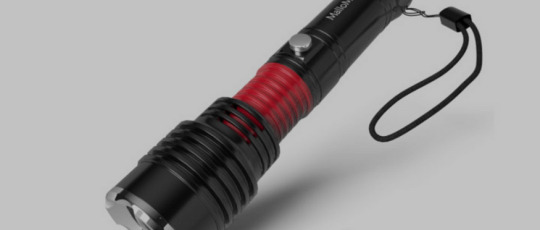
What is 3D Product Animation?
3D product animation involves creating animated, three-dimensional visual representations of a product. Unlike static images, 3D animations allow viewers to see the product from multiple angles, explore its features, and even witness its functionality in action. This immersive approach not only enhances customer understanding but also helps in conveying the brand’s message more effectively.
The Importance of 3D Product Animation
Enhanced Engagement: In a world where attention spans are dwindling, captivating content is crucial. 3D product animations engage viewers by combining visual appeal with informative content. When consumers can see a product in action, it helps create a connection that static images simply cannot achieve.
Complex Demonstrations Made Easy: Certain products, especially those with intricate functionalities, can be difficult to explain through text or simple images. 3D animations simplify this process by visually demonstrating how a product works. For example, a tech gadget can be animated to show its features, usability, and integration into everyday life.
Versatile Marketing Tool: 3D product animations can be used across various platforms, including websites, social media, email campaigns, and presentations. This versatility allows brands to reach their audience through multiple channels, reinforcing their message and enhancing brand recognition.
Increased Sales Conversion: According to studies, products that feature videos or animations have higher conversion rates. By showcasing a product’s unique features and benefits, 3D animations can significantly influence a consumer’s purchasing decision.
Competitive Advantage: In a crowded marketplace, standing out is essential. 3D product animations provide brands with a unique way to showcase their offerings, differentiating them from competitors who rely solely on traditional marketing methods.
The Process of Creating 3D Product Animations
Creating a compelling 3D product animation involves a multi-step process that requires a blend of creativity, technical skills, and collaboration between the client and the animation team. Here’s a breakdown of the typical workflow:
1. Concept Development
Before diving into the animation process, it’s essential to establish a clear concept. This stage involves understanding the product, its target audience, and the message that needs to be conveyed. Brainstorming sessions between the client and the animation team can help identify key selling points and narrative elements.
2. Storyboarding
Once the concept is defined, the next step is to create a storyboard. This visual representation outlines the sequence of events in the animation, including camera angles, transitions, and key moments. Storyboarding helps ensure that everyone involved has a clear understanding of the project’s direction.
3. 3D Modeling
This phase involves creating a digital 3D model of the product. Using specialized software, animators craft a detailed representation that captures the product’s design, colors, textures, and features. This model serves as the foundation for the animation.
4. Animation
With the 3D model complete, animators bring the product to life. This step includes adding movements, effects, and transitions that demonstrate the product’s functionality. For example, a product could be animated to show how it opens, operates, or interacts with other objects.
5. Rendering
After the animation is complete, the final step is rendering. This process converts the animated model into a video format, ensuring that all visual and audio elements are perfectly synchronized. Rendering can be resource-intensive and may take time, depending on the complexity of the animation.
6. Feedback and Revisions
Client collaboration is crucial throughout the animation process. After the initial render, feedback is solicited, and revisions may be made to ensure the final product aligns with the client’s vision.
Applications of 3D Product Animation
3D product animation services find applications across various industries, including:
Consumer Electronics: Tech companies use 3D animations to demonstrate the features of new gadgets, making it easier for consumers to understand their benefits.
Healthcare: Pharmaceutical companies can animate complex medical devices, helping healthcare professionals and patients grasp their functionalities.
Automotive: Car manufacturers create 3D animations to showcase vehicle features, interiors, and performance, enticing potential buyers.
Fashion: Clothing brands can use 3D animations to highlight the fabric, fit, and design of their apparel, creating virtual fashion shows.
Manufacturing: Industrial companies often use 3D animations to visualize machinery and equipment, making it easier to explain complex processes.
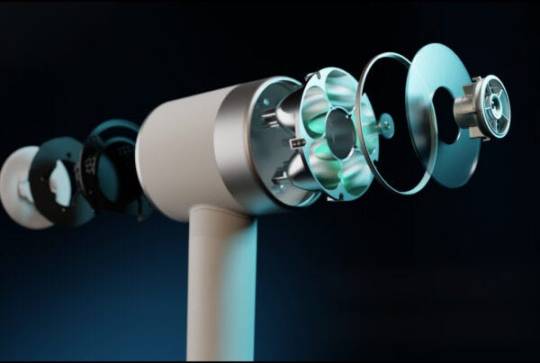
FAQs About 3D Product Animation Services in the USA
1. What are the benefits of using 3D product animation?
3D product animation enhances engagement, simplifies complex demonstrations, increases sales conversion rates, and provides a competitive edge in marketing.
2. How long does it take to create a 3D product animation?
The timeline varies based on the project’s complexity, but typically it takes a few weeks to complete the entire process from concept development to final rendering.
3. What is the cost of 3D product animation services?
Costs depend on various factors, including the length of the animation, complexity, and the animation studio’s expertise. It’s advisable to request quotes from multiple providers to find a suitable option.
4. Can I see examples of previous work before hiring an animation service?
Yes, reputable animation studios usually have portfolios showcasing their previous work. Reviewing these can give you a sense of their style and capabilities.
5. Is client collaboration involved during the animation process?

Conclusion
As the demand for engaging and informative marketing content continues to grow, 3D product animation services offer a powerful solution for brands in the USA. By leveraging this innovative technology, businesses can elevate their marketing strategies, enhance customer understanding, and ultimately drive sales.
If you’re looking to make an impact with your product presentations, consider partnering with 3dmodellingservices for professional and high-quality 3D animations tailored to your needs. Transform the way you showcase your products and stand out in today’s competitive landscape!
2 notes
·
View notes
Text
System Shock 2 in Unreal Engine 5
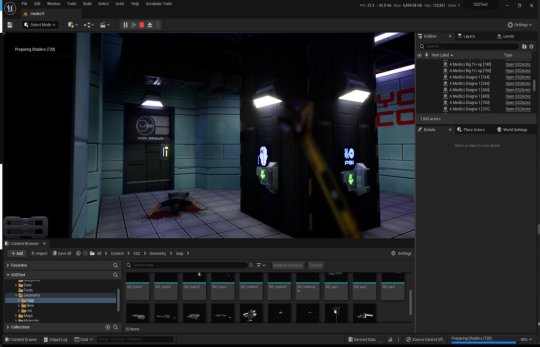
Tools, tools, tools
Back when I worked in the games industry, I was a tools guy by trade. It was a bit of a mix between developing APIs and toolkits for other developers, designing database frontends and automated scripts to visualise memory usage in a game's world, or reverse engineering obscure file formats to create time-saving gadgets for art creation.
I still tend to do a lot of that now in my spare time to relax and unwind, whether it's figuring out the binary data and protocols that makes up the art and assets from my favourite games, or recreating systems and solutions for the satisfaction of figuring it all out.
A Shock to the System
A while back I spent a week or so writing importer tools, logic systems and some basic functionality to recreate System Shock 2 in Unreal Engine 5. It got to the stage where importing the data from the game was a one-click process - I clicked import and could literally run around the game in UE5 within seconds, story-missions and ship systems all working.
Most of Dark engine's logic is supported but I haven't had the time to implement AI or enemies yet. Quite a bit of 3D art is still a bit sketchy, too. The craziest thing to me is that there are no light entities or baked lightmaps placed in the levels. All the illumination you can feast your eyes on is Lumen's indirect lighting from the emissive textures I'd dropped into the game. It has been a fun little exercise in getting me back into Unreal Engine development and I've learnt a lot of stuff as usual.
Here is a video of me playing all the way up to the ops deck (and then getting lost before I decided to cut the video short - it's actually possible to all the way through the game now). Lots of spoilers in this video, obviously, for those that haven't played the game.
youtube
What it is
At it's core, it's just a recreation of the various logic-subsystems in System Shock 2 and an assortment of art that has been crudely bashed into Unreal Engine 5. Pretty much all the textures, materials, meshes and maps are converted over and most of the work remaining is just tying them together with bits of C++ string. I hope you also appreciate that I sprinkled on some motion-blur and depth of field to enhance the gameplay a little. Just kidding - I just didn't get around to turning that off in the prefab Unreal Engine template I regularly use.
Tool-wise, it's a mishmash of different things working together:
There's an asset converter that organises the art into an Unreal-Engine-compatible pipeline. It's a mix of Python scripting, mind numbingly dull NodeJS and 3dsmaxscript that juggles data. It recreates all the animated (and inanimate) textures as Unreal materials, meshifies and models the map of the ship, and processes the objects and items into file formats that can be read by the engine.
A DB to Unreal converter takes in DarkDBs and spits out JSON that Unreal Engine and my other tools can understand and then brings it into the Engine. This is the secret sauce that takes all the levels and logic from the original game and recreates it in the Unreal-Dark-hybrid-of-an-engine. It places the logical boundaries for rooms and traps, lays down all the objects (and sets their properties) and keys in those parameters to materialise the missions and set up the story gameplay.
Another tool also weeds through the JSON thats been spat out previously and weaves it into complex databases in Unreal Engine. This arranges all the audio logs, mission texts and more into organised collections that can be referenced and relayed through the UI.
The last part is the Unreal Engine integration. This is the actual recreation of much of the Dark Engine in UE, ranging all the way from the PDA that powers the player's journey through the game, to the traps, buttons and systems that bring the Von Braun to life. It has save-game systems to store the state of objects, inventories and all your stats, levels and progress. This is all C++ and is built in a (hopefully) modular way that I can build on easily should the project progress.
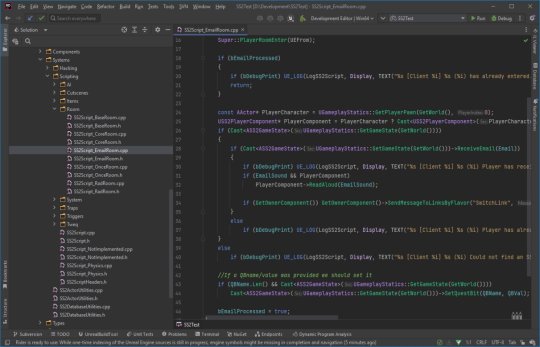
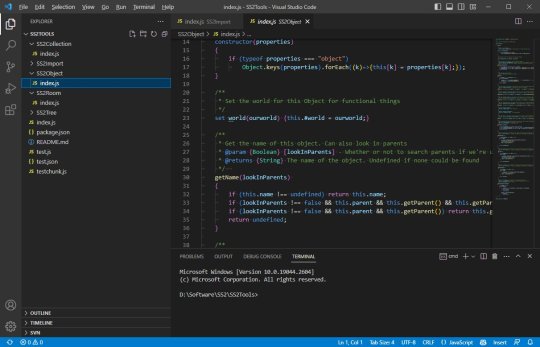
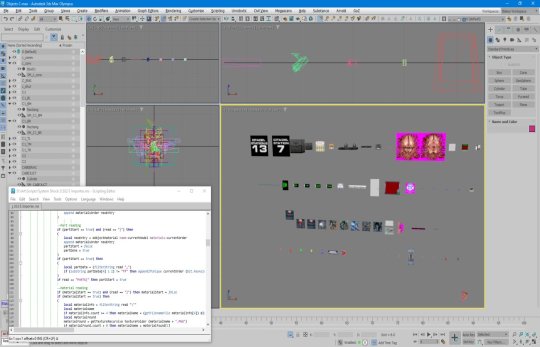
Where it's at
As I mentioned, the levels themselves are a one-click import process. Most of Dark engine's logic, quirks and all, is implemented now (level persistence and transitions, links, traps, triggers, questvars, stats and levelling, inventory, signals/responses, PDA, hacking, etc.) but I still haven't got around to any kid of AI yet. I haven't bought much in the way of animation in from the original game yet, either, as I need to work out the best way to do it. I need to pull together the separate systems and fix little bugs here and there and iron it out with a little testing at some point.
Lighting-wise, this is all just Lumen and emissive textures. I don't think it'll ever not impress me how big of a step forward this is in terms of realistic lighting. No baking of lightmaps, no manually placing lighting. It's all just emissive materials, global/indirect illumination and bounce lighting. It gets a little overly dark here and there (a mixture of emissive textures not quite capturing the original baked lighting, and a limitation in Lumen right now for cached surfaces on complex meshes, aka the level) so could probably benefit with a manual pass at some point, but 'ain't nobody got time for that for a spare-time project.
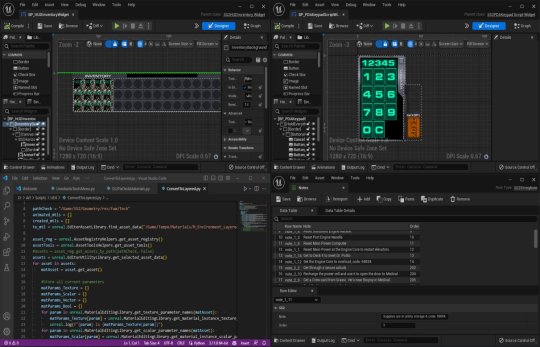
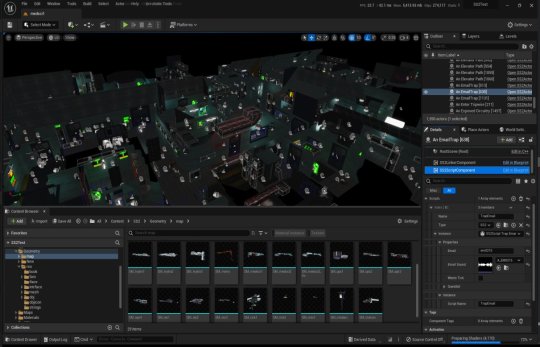
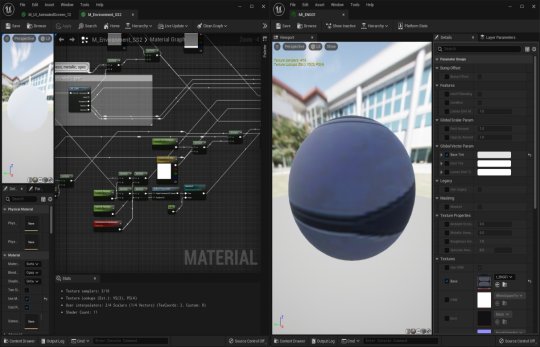

The unreal editor showcasing some of the systems and levels.
Where it's going
I kind of need to figure out exactly what I'm doing with this project and where to stop. My initial goal was just to have an explorable version of the Von Braun in Unreal Engine 5 to sharpen my game dev skills and stop them from going rusty, but it's gotten a bit further than that now. I'm also thinking of doing something much more in-depth video/blog-wise in some way - let me know in the comments if that's something you'd be interested in and what kind of stuff you'd want to see/hear about.

The DB to JSON tool that churns out System Shock 2 game data as readable info
Anyway - I began to expand out with the project and recreate assets and art to integrate into Unreal Engine 5. I'll add more as I get more written up.
#game development#development#programming#video game art#3ds max#retro gaming#unreal engine#ue5#indiedev#unreal engine 5#unreal editor#system shock 2#system shock#dark engine#remake#conversion#visual code#c++#json#javascript#nodejs#tools#game tools#Youtube
1 note
·
View note
Text
How can teachers access affordable STEAM education resources?

In today’s rapidly evolving world, the need for innovative educational approaches has never been more important. As schools, educators, and parents continue to emphasize the importance of preparing students for the future, hands-on learning in the realm of STEAM (Science, Technology, Engineering, Arts, and Mathematics) has emerged as a crucial method. It allows students to engage actively, experiment, and apply their knowledge in real-world contexts. However, selecting the right STEAM education resources to foster this type of learning can be a challenge. So, what are the most effective STEAM education resources for hands-on learning?
1. STEAM Kits and Project-Based Learning Tools
Hands-on kits designed for STEAM education resources can be invaluable for both students and teachers. These kits often include all the necessary materials and instructions to help students explore complex concepts in a tangible way. For example, robotics kits, such as those offered by LEGO Mindstorms or VEX Robotics, allow students to build and program robots, helping them understand coding, engineering, and problem-solving.
Other popular kits include:
LittleBits: These electronic building blocks make it easy to create circuits, gadgets, and interactive projects.
Snap Circuits: A fun way to explore electronics through snap-together parts that help students create simple electrical circuits.
Makey Makey: A kit that turns everyday objects into touchpads, allowing students to experiment with circuits and interactive projects.
These kits are designed to offer experiential learning, making them an effective way for students to understand abstract concepts in a practical, memorable manner.
2. Online Platforms and Interactive Tools
Digital STEAM education resources are equally important for hands-on learning, particularly in today’s technology-driven world. Platforms like Scratch and Tynker introduce coding through interactive and game-like environments, where students can design their own animations, stories, and even games. This fosters creativity while teaching valuable skills in coding and problem-solving.
Scratch: A visual programming language designed for younger learners that makes learning coding fun and intuitive.
Tynker: Offers coding challenges and projects, allowing students to create interactive games, apps, and websites.
For older students or those with more advanced interests, platforms like Arduino and Raspberry Pi provide the tools needed to create their own computers, sensors, and even robots. These platforms promote real-world application of computer science, programming, and engineering principles.
3. STEAM Apps for Mobile Devices
In the age of smartphones and tablets, apps can be an engaging and interactive way to enhance hands-on STEAM learning. There are a multitude of apps designed to foster creativity, problem-solving, and engineering skills.
Tinkercad: A 3D design and printing tool that allows students to create 3D models, perfect for teaching engineering and design principles.
Bloxels: An app that lets students design, build, and play their own video games, combining both arts and technology in one platform.
Osmo: An interactive platform that bridges physical and digital learning with hands-on activities in math, coding, and creative arts.
These apps are designed to offer interactive, engaging experiences that bring STEAM subjects to life, making them accessible anywhere and anytime.
4. STEAM Workshops and Camps
While individual tools and resources are essential, structured learning environments such as workshops and camps provide students with the opportunity to engage with peers and mentors, deepening their understanding through collaborative projects. Makers’ Muse STEAM education resources, such as workshops, bring students together for hands-on, live projects that encourage critical thinking and problem-solving. These environments promote teamwork, leadership, and creativity, offering a well-rounded approach to STEAM education.
Codeacademy Workshops: Coding-focused camps and workshops offer students practical experience and expert guidance, helping them bring their programming skills to life.
Summer STEM Camps: These camps focus on engaging activities that cover all aspects of STEAM, from coding to engineering challenges.
5. Digital Fabrication Tools
Modern fabrication technologies have transformed the way students approach hands-on learning in STEAM education resources. 3D printing and laser cutting technologies, for example, provide a platform for students to design and create real-world objects. Using 3D printers, students can visualize their engineering ideas and prototypes, which helps them learn about design thinking and iteration.
MakerBot and Ultimaker are leading 3D printer brands often used in educational settings.
Laser cutters can turn digital designs into physical models, helping students learn about precision, material properties, and product prototyping.
These tools allow students to take their ideas from the digital realm to tangible, real-world products, bridging the gap between theory and practice.
6. Books and Educational Resources
Books that encourage hands-on STEAM education resources can be a great tool for independent or classroom learning. Titles such as “The Art of Tinkering” and “STEAM Kids” provide a variety of fun and educational projects that allow students to dive into the creative and scientific aspects of STEAM. Additionally, many of these books come with detailed instructions, fostering a deeper understanding of the subject matter.
7. Collaborative Platforms for STEAM Learning
Finally, collaboration is key in today’s learning environment. Platforms like Google Classroom, Edmodo, and Flipgrid enable students to share their projects, collaborate on ideas, and receive feedback from peers and teachers. These platforms foster communication, critical thinking, and creativity, all of which are essential to STEAM education.
Get started with hands-on STEAM learning today!
STEAM education is all about fostering creativity, critical thinking, and problem-solving. The best STEAM education resources for hands-on learning are those that actively engage students in creating, building, and experimenting. From kits and platforms to workshops and apps, there are countless ways to incorporate hands-on STEAM learning into the classroom. By using these resources, educators and parents can ensure that students are not just passive recipients of knowledge, but active participants in shaping their own learning experiences.
At Makers’ Muse, we provide cutting-edge STEAM education resources and lab solutions to schools, offering engaging workshops that bring these hands-on tools to life. Ready to bring STEAM to your school? Explore our offerings and take the first step towards fostering creativity and innovation in your students!
0 notes
Text
3D pen
The 3D pen is a modern gadget for volumetric modeling, suitable for hobby and professional use. It works with plastic filaments that heat up and harden to form three-dimensional objects. It can be used for repairs, creating layouts or art projects. This is the perfect tool for those who love experimentation and creativity!
0 notes
Text
3D Product Animation Services: Bringing Products to Life
In today’s digital age, 3D product animation services have become essential for businesses looking to engage audiences and effectively showcase their products. This powerful tool provides a way to highlight every intricate detail of a product through animation, making it visually appealing, informative, and memorable. By using 3D product animation services, companies can elevate their marketing and advertising strategies, setting themselves apart from competitors and providing a unique experience for potential customers.
Explore the premier Architectural 3D Rendering Services provided by ARKTEK3D, a distinguished firm renowned for its expertise in Architectural Rendering. Enhance your projects with our professional studio, delivering unparalleled 3D rendering services.

What Are 3D Product Animation Services?
3D product animation services involve creating animated visuals that showcase a product’s features, dimensions, and functionality. Unlike traditional photography, 3D product animation allows for a dynamic, 360-degree view, offering a comprehensive look at the product from every angle. This type of service is invaluable for industries such as e-commerce, manufacturing, real estate, and more, as it presents products in an engaging and interactive format.
Companies specializing in 3D product animation services use cutting-edge software and technology to craft high-quality animations. They bring together skilled artists, animators, and designers to create lifelike models, simulations, and effects that highlight the essence of each product. These animations can then be incorporated into websites, social media, ads, or presentations, providing a more immersive experience for viewers.
Advantages of Using 3D Product Animation Services
Enhanced Visual Appeal: With 3D product animation services, businesses can go beyond standard photography and give their audience a more captivating view of the product. Animated 3D models can show how the product functions, making it easier for potential customers to understand its uses and benefits.
Greater Customer Engagement: 3D product animation services enable brands to create content that holds the viewer’s attention. By presenting the product in an interactive and visually appealing manner, companies can encourage more engagement, which often translates to higher interest and conversion rates.
Efficient Communication of Product Features: 3D product animation services are especially useful when a product has complex features or mechanisms. Through animated visuals, it’s easier to communicate the product’s purpose, materials, components, and functions, giving potential customers a full understanding without needing to read lengthy descriptions.
Reduced Returns and Increased Satisfaction: One of the challenges of online shopping is that customers cannot touch or interact with products before purchasing. By using 3D product animation services, brands offer a realistic and detailed view of their offerings. This transparency helps set accurate expectations, reducing the likelihood of returns and increasing customer satisfaction.
Cost-Effective Marketing: Although 3D product animation services may require an initial investment, they offer a high return on investment in the long run. Instead of conducting multiple photoshoots or producing new visuals for every update, brands can repurpose 3D animations across various platforms, saving time and costs.
Applications of 3D Product Animation Services
3D product animation services have applications across numerous industries. In e-commerce, for instance, businesses use 3D animation to provide a virtual view of their products, making online shopping feel more interactive. In the real estate sector, 3D animations are used to create virtual tours, offering potential buyers a realistic sense of the space before they even set foot in it. For technology companies, 3D product animation services bring gadgets and devices to life, showcasing their unique features and functionality in a way that static images cannot.
Choosing the Right Provider for 3D Product Animation Services
To achieve the best results, it’s essential to select a provider with expertise in 3D product animation services. Look for companies with a portfolio that demonstrates high-quality work, attention to detail, and experience in your industry. The right provider will understand your vision and bring it to life, helping you maximize the impact of your product animations.
Conclusion
Incorporating 3D product animation services into your marketing strategy is a powerful way to captivate your audience and showcase your products like never before. From enhanced engagement to cost savings, the advantages of using 3D product animation services are clear. As digital media continues to evolve, brands that adopt 3D product animation services will undoubtedly gain a competitive edge, allowing them to stand out in a crowded market and leave a lasting impression on customers.
0 notes
Text
I came across this article on StartUs Insights about emerging media technologies, and it really got me thinking about how tech is shaking up journalism. One thing that really stood out was their mention of AR (Augmented Reality) and how it’s not just some flashy gadget but a legit tool for journalists to dive deeper with their audience. Imagine this: instead of just reading about a natural disaster, viewers can actually use AR on their phones to "see" a 3D model of the scene. It’s like being right there, understanding the scale and impact way better than words alone could ever do.
The article even hinted at climate change reporting using AR. Think about showing people exactly what rising sea levels would look like in their own cities—seeing your favorite streets underwater in real-time is way more powerful than numbers on a page. For journalists, this means we can turn news from passive reading into interactive experiences, and I think that could change everything. It’s not just about storytelling; it’s about letting people feel the story.

1 note
·
View note
Text
Utillians First Ever E Rig - For Refined Vaporization - The Utillian 8 E-Rig provides 4 temperature ranges for vaporizing classes. The primary two vary from 204°C (400ºF) to 316°C (600ºF), whereas the very best stage can attain as much as 800ºF for max wax extraction and large clouds. The U8 encompasses a 3150 mAh battery that lets you get pleasure from round 30 classes on a single full cost. The built-in auto shut-off turns off the gadget when not vaporizing, saving your battery life for lively classes. The LED lights point out when it is time to begin your session. Controlling your session with the intuitive single-button interface could be very simple. These LEDs are positioned across the button and on the base of the bubbler for visibility. The slender model of bubbler that the U8 options helps to forestall splashback throughout percolation, and the slight tint helps to maintain your gadget wanting clear for longer. Now you'll be able to get pleasure from extra classes with no need to scrub your glass bubbler continuously. The Utillian 8 options an aluminum physique housed in a canopy that makes use of material and plastic to create a modern design. Not solely is the U8 fashionable, however it's additionally customizable with a detachable material cowl and bubbler. The material cowl is hooked up with magnets and offers a cushty grip to carry on to whereas working the multi-tool. The built-in device features as a choke, wax device, and carb cap for added comfort. The Utillian 8 E-Rig offers many options that permit it to effectively vaporize all lively substances in your wax, such because the BurstHit 3D atomizer, which comes geared up with terp pearls. The addition of those options permits even the best concentrates to style wonderful. Options: Removable Gadget Cloth Cowl Excessive-Efficiency BurstHit 3D Atomizer Ruby Terp Pearls Tinted Bubbler Multi-Operate Software Kind-Becoming Carrying Case Haptic and Hue Suggestions It Contains: 1x Utillian 8 E-Rig 1x Utillian 8 E-Rig Carrying Case 1x Utillian 8 Glass Mouthpiece 1x Utillian 8 BurstHit Heating Factor 2x Utillian Ruby Terp Pearls 5x Cotton Swabs 5x Alcohol Prep Pad 1x USB Sort C Charging Cable 1x Instruction Handbook
0 notes
Text
The Role of Technology in the Best Dental Equipment Suppliers
In today’s fast-paced world, technology is transforming every industry, and dentistry is no exception. From enhanced diagnostic tools to improved treatment options, technology has revolutionized the way dental professionals care for their patients. As a result, the Best Dental Equipment Suppliers are constantly incorporating cutting-edge innovations to meet the growing demands of modern dental practices.
In this blog, we’ll explore how technology plays a vital role in the offerings of the Best Dental Equipment Suppliers, shaping the future of dentistry and improving the efficiency and effectiveness of dental care.

The Growing Impact of Technology in Dentistry
Technology in dentistry isn’t just about providing advanced gadgets; it’s about improving patient outcomes, streamlining operations, and enhancing the overall experience. The integration of technology into dental practice management and treatment has led to breakthroughs in imaging, sterilization, patient management, and even patient care.
The Best Dental Equipment Suppliers recognize these technological trends and are continuously adapting their product lines to offer the latest advancements. Whether it’s digital X-rays, 3D printing, or advanced sterilization systems, technology is reshaping the dental landscape in ways that were unimaginable just a few decades ago.
Let’s take a closer look at some of the key technological innovations and how they impact the products supplied by the Best Dental Equipment Suppliers.
1. Digital Imaging and Diagnostics
One of the most significant advances in dental technology is the introduction of digital imaging. Traditional X-ray systems, while still effective, come with limitations, including radiation exposure and slower processing times. Digital imaging systems, on the other hand, offer instant results with far less radiation, improving both efficiency and patient safety.
The Best Dental Equipment Suppliers have embraced this technology by offering digital X-ray machines, cone beam CT scanners, and intraoral cameras that provide high-definition images with unparalleled clarity. These systems not only allow dentists to diagnose conditions more accurately but also enable them to plan treatments more effectively, offering patients the best care possible.
How Technology Enhances Dental Imaging:
Better Accuracy: Digital systems allow for precise detection of dental issues, from cavities to root infections.
Faster Turnaround: Images are available almost instantly, reducing wait times and increasing productivity.
Improved Patient Experience: Patients benefit from lower radiation exposure and more comfortable procedures.
2. CAD/CAM Systems for Faster Restorations
Computer-Aided Design (CAD) and Computer-Aided Manufacturing (CAM) technology have completely transformed the way dental restorations are made. These systems enable dental professionals to design and produce crowns, bridges, and veneers in a matter of hours, rather than days. Using 3D imaging, CAD/CAM systems design restorations that are tailored to the patient’s mouth with remarkable precision.
The Best Dental Equipment Suppliers offer a range of CAD/CAM solutions, including both in-office and laboratory-based systems. These systems reduce the need for multiple office visits and provide patients with a faster, more efficient experience.
Benefits of CAD/CAM Technology:
Speed: In many cases, restorations can be completed in a single appointment, significantly reducing treatment time.
Accuracy: Custom restorations are precisely crafted based on detailed 3D scans of the patient’s teeth.
Patient Satisfaction: Patients appreciate the convenience of quick, same-day restorations and fewer visits to the dentist.
3. 3D Printing: A Game-Changer in Dentistry
3D printing technology is another innovation that has found its place in dental practices. From creating dental models to printing custom implants, 3D printing offers a level of precision and customization that traditional methods cannot match. It has enabled dentists to produce prosthetics, orthodontic devices, and even surgical guides in-house, saving time and costs for both the practice and the patient.
The Best Dental Equipment Suppliers are incorporating 3D printers into their offerings, providing practices with the tools to create high-quality, patient-specific dental solutions. This technology has opened new doors in personalized dentistry, offering highly customized products with minimal lead times.
Why 3D Printing Matters:
Customization: 3D printing allows for the creation of highly personalized dental solutions, such as custom-fitted aligners or surgical guides.
Cost Efficiency: By eliminating the need for third-party manufacturers, 3D printing reduces production costs.
Speed: Items like dental crowns and models can be printed quickly, streamlining office workflows.
4. Sterilization and Infection Control Technology
Ensuring patient safety through proper sterilization and infection control is a top priority for any dental practice. Advances in sterilization technology, including automated autoclaves and advanced disinfectants, have made it easier for dental professionals to maintain the highest standards of hygiene.
The Best Dental Equipment Suppliers are incorporating these innovations into their product lines, offering dental practices the latest in infection control. Modern sterilization systems are faster, more efficient, and easier to use, ensuring that practices comply with rigorous health and safety standards while minimizing the risk of contamination.
How Technology Improves Infection Control:
Efficiency: Modern autoclaves and sterilizers work faster and with greater reliability, allowing dental professionals to maintain a quick turnaround.
Ease of Use: Automated systems make it easier to track sterilization cycles and ensure compliance with health regulations.
Patient Confidence: Advanced sterilization technology assures patients that their safety is being prioritized during every procedure.
5. Patient Management Software: Streamlining Practice Operations
Technology isn’t just about the tools used during treatment—it also plays a significant role in practice management. Modern dental software systems help practices streamline operations, from appointment scheduling to patient records management. These tools make it easier for staff to manage workflows, reduce errors, and ensure that patients receive timely care.
The Best Dental Equipment Suppliers understand that technology isn’t just about physical products. Many now offer integrated software solutions to help dental professionals manage their practices more efficiently. Features like digital patient records, online booking, and billing integration improve the patient experience while also boosting office productivity.
Benefits of Practice Management Software:
Improved Workflow: Automation reduces the need for manual data entry, allowing staff to focus more on patient care.
Better Patient Engagement: Online scheduling and communication tools improve the patient experience and reduce no-shows.
Data Security: Electronic records are easier to manage and protect, ensuring patient data remains secure and compliant with regulations.
6. Teledentistry: Expanding Access to Care
Teledentistry has emerged as a vital tool, especially in the wake of the COVID-19 pandemic. This technology allows dental professionals to conduct virtual consultations, offer follow-up care, and even provide treatment recommendations remotely. By integrating video calls, digital images, and other diagnostic tools, teledentistry has become an accessible and convenient option for patients who may not have easy access to in-person care.
The Best Dental Equipment Suppliers are beginning to offer teledentistry solutions, including secure communication platforms and diagnostic tools designed to support virtual consultations. This innovation is especially beneficial for reaching underserved or rural populations who may not otherwise be able to visit a dentist regularly.
Why Teledentistry Matters:
Accessibility: Patients can consult with a dentist without needing to travel, expanding access to care.
Convenience: Virtual consultations allow patients to address concerns quickly without scheduling a physical appointment.
Improved Patient Retention: Offering remote care can help maintain patient relationships, even when in-person visits are not possible.
Conclusion: Technology and the Best Dental Equipment Suppliers
The role of technology in dentistry is undeniable, and the Best Dental Equipment Suppliers are leading the charge in integrating these innovations into their product offerings. From digital imaging and CAD/CAM systems to 3D printing and teledentistry, technology is not just enhancing the way dental professionals treat patients but also improving the overall efficiency of dental practices.
By embracing these technological advancements, dental professionals can offer faster, more accurate care while also streamlining their practice management. As technology continues to evolve, the Best Dental Equipment Suppliers will remain at the forefront, providing the tools and solutions needed to drive the future of dentistry.
For dental practices looking to stay competitive and deliver the highest standard of care, choosing a supplier that embraces and integrates the latest technology is key. These suppliers are not just providing equipment—they’re helping shape the future of dental care itself.
#b2bmedicalequipmentsuppliers#medicaldevicessuppliers#healthcareproductssuppliers#medicalsuppluchain#medicalproductsuppliers#hospitalequipmentsuppliers
0 notes
Text
Using Cutting-Edge Standards and Techniques to Maximize Performance in PCB Design

Have you ever wondered what drives the functionality of your electronics? With PCB design, gadgets like computers and smartphones have ingrained themselves into our daily lives. However, did you know that every electronic gadget has a little-known hero at its core who makes everything possible? It is known as a printed circuit board, or PCB, and it is the unsung hero deserving of much greater recognition. Actually, with state-of-the-art methods and standards that can elevate your gadgets, PCB design has evolved into a kind of art unto itself. Prepare accordingly! We'll delve deeply into the field of PCB design in this post, examining the most recent methods and guidelines that can help you get the most out of your electronics and improve their performance. So grab a seat, and get ready to explore the fascinating field of PCB design! Printed circuit board (PCB) design is now more complex than just connecting the dots. PCB designers must use cutting-edge methods and follow the most recent standards because technology is developing at a breakneck pace in order to maximize performance. The field of PCB design offers a plethora of fascinating opportunities, ranging from sophisticated software tools to thermal management strategies.
Designers use sophisticated software tools, like 3D modeling software and simulation tools, to produce effective and dependable PCBs. With the aid of these tools, designers can minimize signal interference, lower noise, and optimize component placement and routing. Mixed-signal and high-speed digital printed circuit boards are also essential for optimizing performance. High-speed data transfer and complex signal processing are features that these PCBs are made to handle, and their designers had to consider things like power distribution, signal integrity, and electromagnetic interference.
Techniques for managing heat are another crucial component of PCB design. Electronic equipment produces heat, which can hinder operation and possibly result in failure if it is not properly dissipated. Thermal vias, heat sinks, and thermal pads are tools used by designers to disperse heat into the surrounding area and away from vital components. The performance of PCBs is also significantly influenced by the manufacturing process. The newest manufacturing techniques frequently make use of advanced materials like copper-clad laminates and surface mount technology. By directly attaching components to the PCB's surface, surface mount technology helps to minimize the device's size and weight.
Wrapping up
Using the most recent methods and standards while optimizing performance is the essence of PCB design art. Designers are able to produce PCBs that are dependable, efficient, and fit the requirements of contemporary electronic devices by utilizing sophisticated software tools, high-speed digital and mixed-signal PCBs, thermal management strategies, and sophisticated manufacturing processes.
At Silicon Signals, we recognize the value of state-of-the-art PCB design methodologies and guidelines. Our ability to design and develop high-speed digital and mixed-signal PCBs allows us to assist clients in achieving the performance levels they have set for themselves. Whether you require help with advanced manufacturing processes, thermal management, or PCB design, we are dedicated to providing creative and reliable engineering solutions that satisfy the demands of contemporary electronic devices. Silicon Signals is the only company you need to consider if you need assistance with PCB design. To find out more about how we can assist you in upgrading your electronic devices, get in touch with us right now.
#embeddedsoftware#embeddedsystems#embeddedtechnology#linux kernel#android#linuxdebugging#androidbsp#aosp#iotsolutions#iot development services#pcb manufacturer
0 notes
Text
Career Paths after a Bachelor of Design: From Fashion to Product Design

Bachelor of Design, an undergraduate degree program offered by various reputed educational universities and institutions in India, offers a multidisciplinary design curriculum suited for students of the 21st century. The program fosters them to become a world leader who is ready to take responsibility and create an impact on the society.
Looking at it professionally, completing a Bachelor of Design (B Des degree course) allows you to choose many versatile and growing career options in the creative industry. It opens choices for roles in product design, fashion, communication etc and can give you a solid foundation within various domains that are adapting technology. A well-crafted B Design course can expand your career prospects to build a successful career. Read more to look at the various career options that you can choose with a B design degree.
Bachelor of Design: Course Overview
(B Des course is a 4-year undergraduate program that train students in design disciplines. The Bachelor of Design subjects include graphic design, product design, fashion design and interior design. The degree help students develop entrepreneurial mindset and gives them a chance to be a part of creative world.
Key Aspects of the B Des Degree
Course Duration: 4 years
Eligibility: Students must have completed their 12th-grade exams with at least 50 % marks.
Specializations: Product Design, Graphic Design, Fashion Design, Interior Design, etc.
Career Opportunities: This course prepares students for a career path in different sectors such as fashion or product development.
Now that we’ve got this foundational knowledge, it’s time to look at some interesting career paths for B Des graduates.
Fashion Designer
After finishing a Bachelor of Design course, one of the most frequent career paths which graduates take on is fashion design. A fashion designer creates clothing and accessory items that represent style trends. Sometimes fashion designers may also work in fashion houses or design studios, or even have their own fashion labels. This kind of training is necessary to succeed in this competitive field. Most graduates end up working with well-known brands or becoming part of haute couture.
Product Designer
A growing lucrative career choice for B Des degree holders is product design. The role of a product designer is to work with things such as gadgets, furniture, or even consumer goods. The functionality and aesthetics are mixed to construct products improving users’ experiences. If you come from a product design background, you might work in technology, automotive or consumer goods.
Engineers and manufacturers often work with product designers to bring their ideas to life. A B Des course in product design teaches you how to make 3D models, select materials, and even do some prototyping.
Communication Designer
The designers responsible for visual and textual content that represents a business. The aspects of communication design include typography, advertising creatives, brand identity etc. They are basically a superset of graphic designers, UX Designers, video & animation experts.
They represent brand image and convey messages to the target audience.
Graphic Designer
A graphic designer creates digital and print collaterals for reputed brands and businesses like brochures, websites, and logos using visual communication techniques and technological tools and software. Those with a creative side, and who also love using technology will love this career. Graphic design has become a very sought-after field because of the rapid rise of digital media. The demand for these services has skyrocketed.
Graphic designers use software such as Adobe Photoshop and Illustrator. They also use principles of layout, typography and colour theory, which can be learned in a Bachelor of Design degree. Graduates can work in advertising agencies, and publishing companies and can also work as freelancers.
Interior Designer
If you are one of those people who are passionate about creating functional and delightfully attractive indoor spaces, you might be suited for a career in interior design. Interior designers handle residential, commercial, and industrial projects by transforming the space within the client’s needs and preferences. But interior designers need to know how to select colour schemes, and how to create layouts.
By enrolling in a B Des course in interior design, you’ll learn all the skills necessary to shine in this profession, including space planning, material selection and light design. After graduation, students team with architects, contractors and clients to produce aesthetically pleasing and functional spaces.
UX/UI Designer
As digital platforms have become more popular, user experience (UX) and user interface (UI) designers have become more important. UX and UI design are people involved in creating and enhancing the usability and visual appeal of websites, apps, and digital products. This career path may be for you if you like to understand the behaviour of the user and make an interface user-friendly.
Common UX/UI design jobs are obtained after completing a Bachelor of Design course in interaction design or communication design. These designers collaborate with developers and marketers to make a smooth and rewarding experience.
Art Director
Art direction is a leadership role within the creative industry where you’ll be taking charge of the visual style and content of magazines, newspapers, advertising or websites. Art directors also coordinate teams of designers and artists to make the project in line with the client’s concept. You need to have a strong art and leadership background for this career.
Conclusion
A Bachelor of Design degree opens the door to many exciting and creative jobs. Given the high growth rate of the design industry, now is the perfect time to start a career in the industry. If you’re willing to become a future design leader, then design colleges in India like Rishihood University is the perfect place for you. They offer 4 years residential program with a 6 month paid internship. Plus, their global study treks ensure you get an edge in the competitive industry. So, enrol now and begin your journey with the top design college in India!
#bachelor of design subjects#bachelor of design course#bsc in psychology#bsc psychology colleges#bachelor of design colleges
0 notes
Text

What Is Drone Survey And Mapping?
Drone surveys and mapping are game-changers in how we gather data from the skies. It’s like swapping out your old-school measuring tape for a high-tech flying gadget. With drones, you can map large areas, collect precise data, and create detailed maps in a fraction of the time.
But what’s going on here? Let’s break it down!
What’s Drone Surveying?
Drone surveying is the use of unmanned aerial vehicles (UAVs) equipped with sensors to capture data about a particular area. Imagine a drone flying over a construction site, snapping high-resolution images from above. That data is then stitched together to create an accurate model of the terrain. Gone are the days when you needed a whole crew to walk around with survey poles. Now, you can cover huge areas quickly and safely, with no need to step on rough or dangerous terrain.
How Does Drone Mapping Work?
Drone mapping is the process of creating 2D maps or 3D models from the data collected by the drone. The drones take a ton of photos from different angles, and specialized software analyzes those images to generate maps, models, or point clouds (fancy talk for 3D visual data). These maps can help in construction, agriculture, land surveys, and even environmental research. From elevation data to detailed topographic models, drones give you the ability to see your project from every angle.
The Benefits Of Drone Surveying And Mapping
Time Efficiency: You’ll get data in hours, not days.
Cost Savings: No need for heavy equipment or large crews.
High Precision: Drones can capture data with incredible accuracy.
Safety: Surveying tricky terrain? Drones do it so you don’t have to!
Best Drone For Surveying And Mapping: DJI MATRICE 350 RTK – M350 DRONE
Now, if you’re serious about drone surveying and mapping, you need the right tool. The DJI MATRICE 350 RTK – M350 DRONE from Mavdrones is hands-down the best choice for this kind of work. It’s built with powerful sensors that provide centimeter-level accuracy, thanks to its real-time kinematics (RTK) technology. You get precise data even in complex environments. It also has an insane flight time, which means fewer battery swaps and more mapping. So, whether you’re a surveyor, architect, or engineer, the DJI M350 will elevate your projects!
0 notes